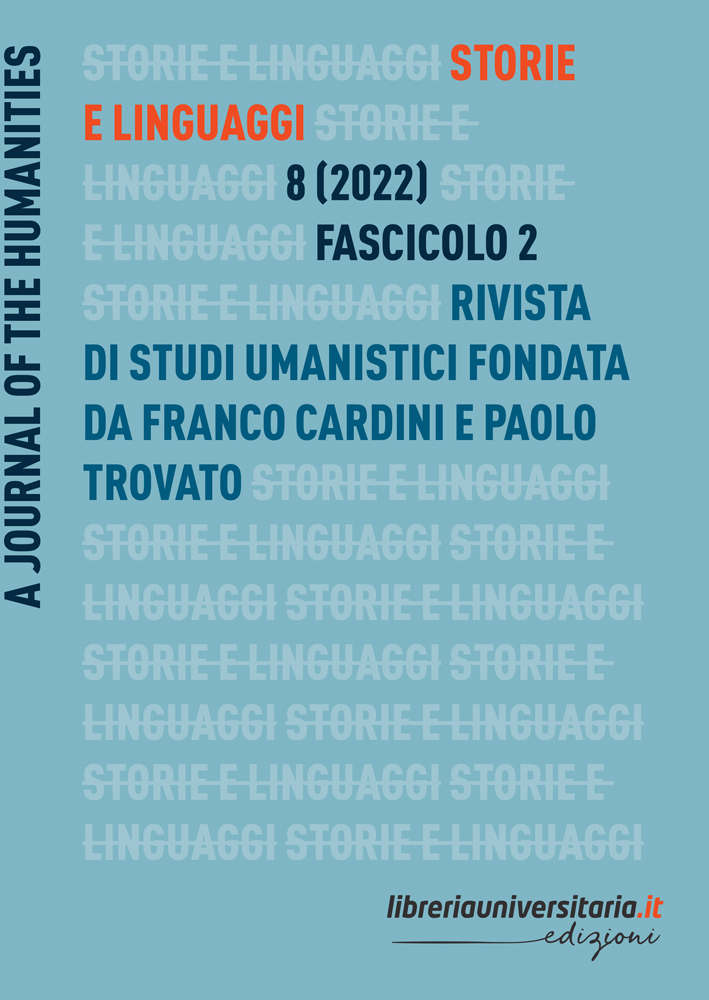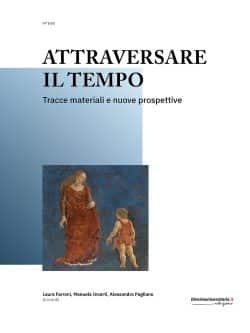Indice
The paper presents a new database of both critical editions of ancient Latin grammatical works and descriptions of medieval manuscripts of Latin grammarians. The database uses the content creation system Cadmus developed in 2020 by Daniele Fusi, that enables a more flexible and complex digital markup than TEI. The former part of the article describes the structure of the database and the underlying criteria of linguistic and philological analysis, setting this research project in the current scholarly debate about digital critical editing. The latter part of the article presents some case-studies that illustrate the textual critical and linguistic markup applied to Latin grammatical texts through Cadmus.
The paper relates to the different interpretation of more or less “miraculous” phenomena in the accounts of pilgrims.
Leonardo Montagna: a humanist among humanists.
The article explores the relationships between a minor humanis from Verona, Leonardo Montagna, and some famous scholars of the time, such as Gian Mario Filelfo, Pomponio Leto, and Lorenzo Valla in order to reconstruct the social and cultural environment of mid-fifteenth-century Verona, a peripheral, but lively, centre of Humanism. Since no correspondence from Montagna has survived the passage of time, the essay relies on the information that can be obtained directly from the poetry of the author and indirectly from the poems and letters addressed to him by contemporary writers.
The interpolated «Story of Attila» and a Fifteenth century copyist (scritore) from Padua
The manuscript 2257 of the Padua University Library contains the translation into the vernacular of a «Story of Attila».
The content departs from the Franco Venetian and Latin tradition because of the existence of extensions inserted by an anonymous translator into the vernacular. The text was copied between 8th and 22nd May 1466 by an unknown copyist, who presents himself as “scritore” (writer).
About some linguistic corrections in Orlando furioso. Metaplasms and heteroclite forms
The analysis of metaplasms and heteroclite forms in the three editions of Orlando furioso is a “reagent” to better highlight the relationship that Ariosto establishies over time with his linguistic models, especially with the Aldo Manutius editions of Dante and Petrarch, and confirms that only for some traits the poet follows the norm of the treatises of Fortunio and Bembo, while in the change or in the maintenance of some forms others factors, both intertextual and stylistic-prosodic, may come into play. The analysis also allows to date with more precision some corrective phases of the last Furioso and perhaps also to identify some typos.
A Pamphlet of “quaternaries” by Pietrobono of Mantua translated and rearranged by Orazio Rinaldi
Orazio Rinaldi’s Dottrina delle virtù e fuga dei vizi (1585) was considered to be a translation of De IV virtutibus attributed to S. Thomas Aquinas, known for its “quaternary” definitions of virtues and vices, giving for each of them four causes or four purposes. This essay shows that it is in fact a close translation of Petrusbonus de Mantova’s (thirteenth century) Doctrina virtutum et fuga vitiorum, printed for the first and only time in Verona in 1504. A comparison of these texts and some manuscripts proves that the work was transmitted in two versions and that Rinaldi followed the one by Petrusbonus. Rinaldi re-arranged its content in an alphabetical order, thus transforming a moral treatise on virtues and vices into list of “quaternary” definitions that appealed to the baroque taste, as proven by the Spanish and English translations.
Vișniec’s Decomposed theatre: the man who sleeps and the one who lives
In this article it will be analyzed one of the first dramas written directly in the French language by Matei Vișniec, an established and well-known French-Romanian author, starting from 1987, the year of his self-exile in France due to the persecutions of the communist regime that scourged the most original intellectuals of that period.
I have preferred, in the analysis of this theatrical piece, an approach as close as possible to anthropology and sociology, making use of many texts ranging from aesthetic essays to journalistic articles, to present a reading as innovative as possible on one of the many forms of individual dispossession that the author elects here, namely the distorted use of mass media, recognizing at the same time in the dense versatility of the play the stimulus for a necessarily plural reading of the dramaturgical text. The following analysis will therefore try to clarify at least one side of this fascinating drama, which is so affected by the vein of the Absurd.





